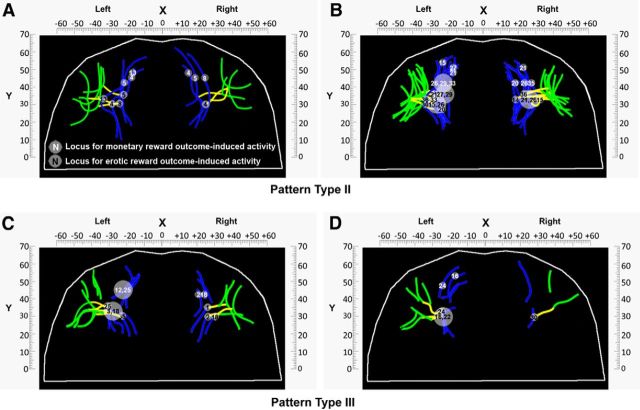Figure 6.
Anatomo-functional organization of the OFC's morphology of the pattern Type II and III in all subjects within each hemisphere. A–D, Locations of value signals at the time of monetary and erotic reward outcome for all subjects in both hemispheres grouped by the pattern Type II and Type III, respectively. To avoid overlapping of locations of experienced value signals across subjects, we present the results of each pattern type in two separate panels so that the relationship between experienced value signals and specific sulci locations can be illustrated clearly. Each dot indicates the location of the reward outcome-specific activity in each individual subject. Each number indicates the subject's number described in Tables 3, 4, 6, and 7. White and black numerals indicate the experienced value signals for monetary and erotic rewards observed in the OFC, respectively. Bigger circles with two or three numbers imply that these subjects to whom these numbers refer have the same MNI coordinates. As shown in the figure, all subjects display monetary reward-related activity in the MOSr for these two orbitofrontal subcogyral types. In contrast, all subjects display erotic reward-related activity at the intersection between the MOSc and TOS for these two orbitofrontal subcogyral types.

